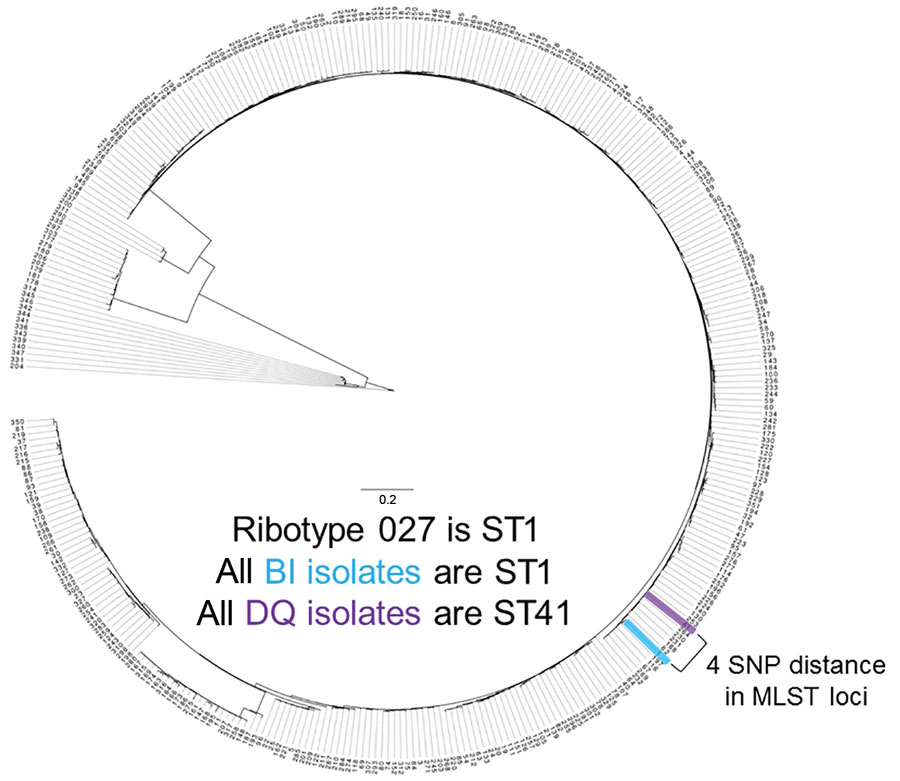Volume 26, Number 2—February 2020
Research
Unique Clindamycin-Resistant Clostridioides difficile Strain Related to Fluoroquinolone-Resistant Epidemic BI/RT027 Strain
Figure 2

Figure 2. MLST loci map for Clostridioides difficile strains DQ/RT591 and BI/RT027 in study of C. difficile at 2 US Veteran Affairs long-term care facilities and their affiliated acute care facilities. The 2 strains are 4 SNPs apart. Scale bar indicates nucleotide substitutions per variable site of loci. MLST, multilocus sequence typing; SNP, single-nucleotide polymorphism; ST, sequence type.
Page created: January 17, 2020
Page updated: January 17, 2020
Page reviewed: January 17, 2020
The conclusions, findings, and opinions expressed by authors contributing to this journal do not necessarily reflect the official position of the U.S. Department of Health and Human Services, the Public Health Service, the Centers for Disease Control and Prevention, or the authors' affiliated institutions. Use of trade names is for identification only and does not imply endorsement by any of the groups named above.